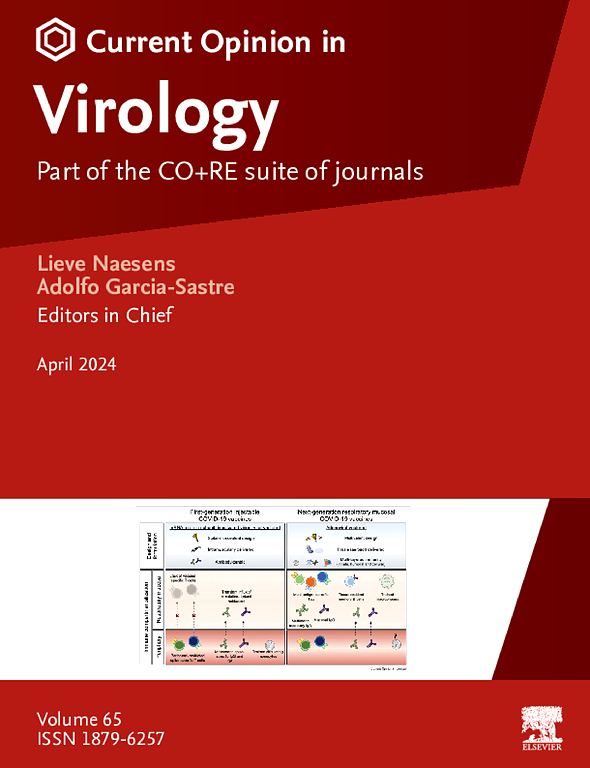Virological and immunological determinants of hepatitis E virus infection outcomes
IF 5.1
2区 医学
Q1 VIROLOGY
引用次数: 0
Abstract
Hepatitis E virus (HEV) is a leading cause of acute viral hepatitis worldwide, especially in regions with limited sanitation infrastructure. Unlike hepatitis B virus (HBV) and hepatitis C virus (HCV) — which frequently progress to chronic infections associated with cirrhosis and hepatocellular carcinoma — HEV typically leads to acute and self-resolving infection in immunocompetent individuals. This review explores the mechanistic underpinnings that distinguish HEV’s clinical trajectory from HBV and HCV, focusing on viral genome organization, replication strategies, immune evasion tactics, and host immune responses. Understanding these factors provides critical insights into the determinants of viral clearance versus persistence and may guide future vaccine and antiviral development.
戊型肝炎病毒感染结果的病毒学和免疫学决定因素。
戊型肝炎病毒(HEV)是全世界急性病毒性肝炎的主要病因,特别是在卫生基础设施有限的地区。与乙型肝炎病毒(HBV)和丙型肝炎病毒(HCV)不同,乙型肝炎病毒(HBV)和丙型肝炎病毒(HCV)经常发展为与肝硬化和肝细胞癌相关的慢性感染,HEV通常在免疫能力强的个体中导致急性和自解性感染。这篇综述探讨了区分HEV与HBV和HCV临床轨迹的机制基础,重点是病毒基因组组织、复制策略、免疫逃避策略和宿主免疫反应。了解这些因素有助于了解病毒清除与持续存在的决定因素,并可能指导未来疫苗和抗病毒药物的开发。
本文章由计算机程序翻译,如有差异,请以英文原文为准。
求助全文
约1分钟内获得全文
求助全文
来源期刊

Current opinion in virology
VIROLOGY-
CiteScore
11.80
自引率
5.10%
发文量
76
审稿时长
83 days
期刊介绍:
Current Opinion in Virology (COVIRO) is a systematic review journal that aims to provide specialists with a unique and educational platform to keep up to date with the expanding volume of information published in the field of virology. It publishes 6 issues per year covering the following 11 sections, each of which is reviewed once a year: Emerging viruses: interspecies transmission; Viral immunology; Viral pathogenesis; Preventive and therapeutic vaccines; Antiviral strategies; Virus structure and expression; Animal models for viral diseases; Engineering for viral resistance; Viruses and cancer; Virus vector interactions. There is also a section that changes every year to reflect hot topics in the field.
 求助内容:
求助内容: 应助结果提醒方式:
应助结果提醒方式:


